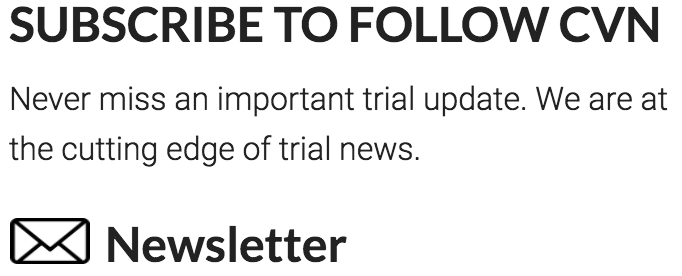Credibility is a cornerstone to winning any jury trial, and building that credibility from a trial’s opening moments is crucial. In the latest episode of Trial Technique Spotlight, Shane Read, one of the nation’s leading trial and jury consultants, details the “brutally honest” opening The Weathington Firm’s Paul Weathington gave to build credibility with jurors and ultimately clear his physician client in a $75 million medical malpractice trial.
A Georgia man suffered a major stroke shortly after a chiropractic treatment, and his attorneys contended that a range of health care providers failed to diagnose or treat the stroke in a timely fashion, leading to the man’s locked-in syndrome paralysis.
Weathington’s client was a neurologist called for consultation on the man’s case after he arrived at the hospital. And in his opening statement, Weathington told jurors that the case against his client rested on the claim that the neurologist had been told that the patient had undergone a chiropractic adjustment before the stroke and that imaging of blood vessels in his head and neck had already been ordered.
“We’re going to be brutally honest,” Weathington told jurors. “If you believe that, at the end of the day, [the neurologist] is going to admit from this witness stand ‘I blew it.’”
Weathington then doubled-down on the contention, leaving no doubt about where he drew the line in his case.
“Brutally honest: if [the neurologist was told of those two issues], then… my client violated the standard of care. We’re willing to put that out there,” Weathington said. “Because he wasn’t told that.”
Read said that blunt, direct approach is a powerful way to build credibility with a jury from a trial’s opening moments.
“[Weathington] was the truth-teller in the courtroom,” Read said. “It takes guts to say ‘I’m going to be brutally honest.’”
Read noted that, importantly, that “brutal honesty” honed the case against Weathington’s client to one key issue: whether jurors believed that the neurologist was actually told of the chiropractic adjustment and imaging, which Weathington argued would have instantly led the experienced doctor to order treatment for a stroke.
“It just makes the issue very simple,” Read said.
And Read added that Weathington used a memorable metaphor that would highlight just how closely the chiropractic adjustment and imaging were aligned with a possible stroke.
“Those two things go together like bacon and eggs,” Weathington had told jurors.
“Paul Weathington uses a fantastic metaphor — bacon and eggs — to show how simple it was for the neurologist to order the correct treatment, if only he’d been told the right circumstances in the phone call from the ER doctor.”
That colorful, “truth-telling” approach, in which Weathington made a key concession to focus the issues against his client, built credibility from the trial’s opening moments. And it helped clear the neurologist, while jurors found two other physicians at fault in the case and handed down a $75 million verdict against them.
Read’s analysis of Weathington's opening is the latest in CVN’s ongoing series, Trial Technique Spotlight, with Shane Read. Read is a nationally recognized trial consultant and award-winning author who has helped thousands of lawyers transform their deposition, trial, and oral advocacy skills through in-house training programs, one-on-one coaching, and keynote speeches. And in each episode of Trial Technique Spotlight, he uses CVN’s courtroom video to detail the techniques the nation’s top attorneys use, and how to best use them in your own cases. You can learn more about Shane and sign up for his newsletter at ShaneRead.com.
Email Arlin Crisco at acrisco@cvn.com.
Related information:
Learn how Shane Read can help you with trial and jury consulting.
Watch all the episodes of Trial Technique Spotlight, with Shane Read.
Watch the trial at the heart of this episode.
Not a subscriber?
Learn how you can access an unrivaled trial video library.




